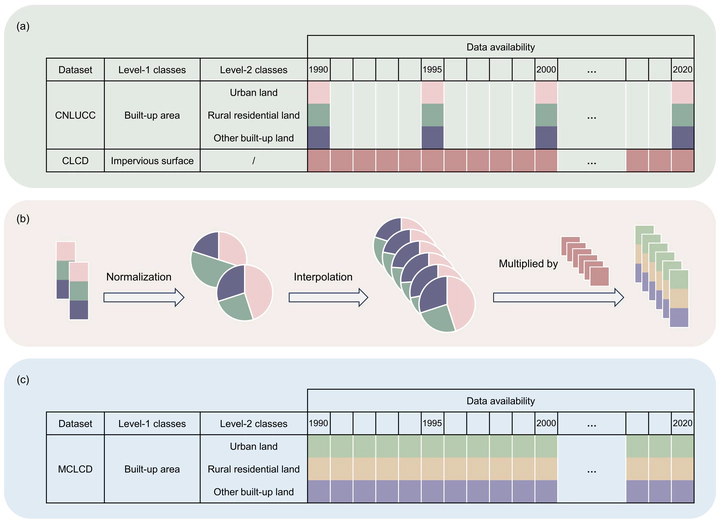Cropland non-agriculturalization caused by the expansion of built-up areas in China during 1990-2020

Abstract
The unprecedented built-up area expansion in China has resulted in a significant occupation of cropland. Yet, to date, we have not achieved continuous monitoring of the occupation of cropland by different types of built-up land, nor have their annual impacts on non-agriculturalization been revealed. Here, for the first time, we have generated a dataset spanning from 1990 to 2020, consisting of annual areas for urban land (UL), rural residential land (RRL), and other built-up land (OBL) and their occupation of cropland at the county level across China. Subsequently, the annual contributions of these three types of built-up land expansion to non-agriculturalization in China were unveiled. Our results show that the average annual conversion of cropland into UL, RRL, and OBL was 1520.60 km², 1464.60 km², and 987.44 km², respectively, during the study period. Among these, only the conversion of cropland into OBL exhibited a significant increasing trend of 4.64 km²/a. Overall, different types of built-up land have distinct spatial impacts on the non-agriculturalization of cropland at the county level, which undergo significant changes over time. The non-agriculturalization of cropland in China is significantly influenced by the expansion of built-up areas, particularly in counties in the eastern regions. The northern regions are most affected by UL expansion and RRL expansion, followed by the southern regions. OBL expansion has significantly impacted the non-agriculturalization of counties in the southern regions, with its influence gradually extending from eastern to western China during the study period. Before 2015, the expansion of UL had a higher impact on non-agriculturalization compared to RRL and OBL. However, from 2015 to 2020, in 62.52% of counties, the expansion of RRL contributed more to non-agriculturalization than the expansion of RRL and OBL. It is suggested that China should pay more attention to protecting cropland from being occupied by RRL expansion. This study provides insights that can inform sustainable land use planning and facilitate the development of targeted cropland protection policies.